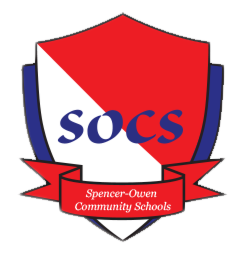Dyslexia
With the passage of IC 20-35.5, et seq., as created by SEA 217 (2018) in April 2018, Indiana school corporations and charter school’s reading plans must now include screening for dyslexia risk factors and indicators. If a student is determined to be at-risk for dyslexia, the school will administer an additional dyslexia screener, which will identify whether or not the student needs to be referred for further testing. It also requires schools to use specific response to intervention processes if screeners indicate certain characteristics of dyslexia are present.
Dyslexia as defined by IC 20-18-2-3.5 is a specific learning disability that:
(1) is neurological in origin and characterized by:
(A) difficulties with accurate or fluent word recognition; and
(B) poor spelling and decoding abilities;
(2) typically results from a deficit in the phonological component of language that is often unexpected in relation to other cognitive abilities and the provision of effective classroom instruction;
(3) may include problems in reading comprehension and reduced reading experience that can impede the growth of vocabulary and background knowledge; and
(4) may require the provision of special education services after an eligibility determination is made in accordance with 511 IAC 7-40.
In accordance with IC-20-35.5-6-2, Spencer Owen Community Schools now has an authorized reading specialists trained in dyslexia at every building.
In accordance with this new law, each school corporation and charter school shall report on the school corporation or charter school's website the following information:
What intervention programs are used to assist students with characteristics of dyslexia?
All kindergarten through second grade SOCS students received Tier 1 instruction in their classrooms daily.
Dyslexia intervention programs must have explicit direction and instruction that is systematic, sequential, and cumulative. Instruction that follows a logical plan of presenting the alphabetic principle that targets the specific needs of the student without presuming prior skills or knowledge of the student. It must use meaning based instruction that is directed at purposeful reading and writing. Instruction that incorporates the simultaneous use of two (2) or more sensory pathways during the presentation of instruction and student practice. It is also important to keep in mind that the dyslexia program should be research based and be offered in a setting that also teaches the five (5) components of literacy.
Orton Gillingham is Spencer Owen Community Schools phonics and spelling curriculum in grades K-2 that meets these requirements. This systematic, sequential, and cumulative intervention is used in small group instruction in tier 2 and tier 3 small groups as needed, along with the Read Well and PCI.
Click here to visit the IDOE website for more information.
How many students were identified with dyslexia tendencies during the school year?
SOCS DISTRICT | ||||||
# of students "at risk" or "at some risk" that received dyslexia intervention | ||||||
21-22 | 22-23 | 23-24 | 24-25 | 25-26 | 26-27 | 27-28 |
72 | 55 | |||||
# of student identified w/ dyslexia | ||||||
21-22 | 22-23 | 23-24 | 24-25 | 25-26 | 26-27 | 27-28 |
0 | 0 | |||||
